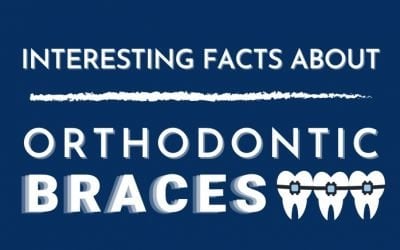Lingual Braces: What Are They and How Much Do They Cost?
If you’re an adult who is considering a more discreet form of orthodontic treatment, then you might have heard about lingual braces. But what are these braces and how much do they cost?
We explore this relatively unknown orthodontic treatment option and give you all the facts to help you make an informed decision about your smile.
How Much Do These Braces Cost in Australia?
Lingual braces tend to cost more than traditional braces because they’re an entirely custom solution that has been made in a dental laboratory to perfectly fit your teeth. Treatment with these braces also requires more frequent appointments and much longer appointment times than regular braces, thus also increasing the cost. A full 18 – 36 month treatment will be more expensive than traditional “outside” braces, however, the costs will vary on a case-by-case basis.
Average prices in Australia can vary by state, however, lingual braces may cost anywhere from $9500 – $15,000 for a full 18-24 month treatment period. Shorter, or more limited treatments involving only some of the teeth may cost significantly less than this and complicated or lengthy treatments may exceed this range. The only way to assess your suitability for these braces and get an accurate quote for the cost of treatment is to first have a face to face consultation with an orthodontist so they can closely assess your needs, concerns and treatment expectations.
What Are Lingual Braces?
Lingual braces – also known as “inside” braces – are teeth straightening treatment that is popular with adults thanks to the fact that they’re practically invisible.
To help keep your treatment concealed, these braces are attached to the inside of the teeth rather than the outside, making them invisible when you smile.
These braces are custom-made for your teeth. Your orthodontist takes an accurate impression or digital scan of your teeth, which is then used to create customised wires and brackets that will snugly fit along the line of your teeth and help to gradually move them into the desired position.

Can These Braces Fix an Overbite?
An overbite is when the top jaw and teeth overlap the lower jaw and teeth, which is also called a malocclusion. Lingual braces can fix an overbite by applying pressure to certain teeth, in order to move them into the desired position. If you are concerned about your overbite but do not want people to know you are having treatment, these braces may be a great solution for you. If this is something you are considering, it’s best to speak to your chosen orthodontist who will discuss treatment options with you during a consultation.
How Will Lingual Braces Affect My Lifestyle?
While these braces might more subtle than traditional “outside” braces, they are still braces! Therefore you will still have some restrictions when it comes to the foods you can eat throughout your treatment.
The wire might be made of metal but it is not indestructible, so you should always take care when consuming anything particularly hard or chewy as this can bend or break the wire. You will need to gently brush your teeth and gums twice a day and floss to remove any food build-up that can cause plaque to form.
In some instances, your treatment may require the use of rubber bands to help move your teeth into position. Your orthodontist will show you the correct way to apply your rubber bands, but this method of treatment requires you to be diligent about their use. You should remove them to eat and to brush your teeth so they don’t snap when you open your mouth.
What Can You Eat with Lingual Braces?
When getting these braces, patients sometimes feel concerned about how it will affect their diet. While you may need to avoid some foods when you first get your braces applied, there are many delicious foods that you can still eat. This includes some of your favourite dishes such as bread, mashed potatoes and pancakes. When deciding what to eat with these braces, it’s best to reach for food that is low in sugar and does not require excessive chewing. Some options include…
- Pancakes
- Puddings
- Rice
- Pasta
- Bread
- Mashed potatoes
- Soup
- Cheese
Food to Avoid with Lingual Braces
To avoid unplanned trips to the orthodontist, it’s best to avoid hard, chewy foods that may break a bracket. This includes…
- Chewy foods such as hard rolls and liquorice
- Sticky foods such as caramel, bubble gum, and snickers
- Crunchy foods such as chips and popcorn
- Sugary foods such as lollies
- Hard food such as nuts and pretzels
- Foods that you need to bite into forcefully such as apples, raw carrots, and corn
Do These Braces Hurt?
When lingual braces are attached for the first time or adjusted for the first few times you may feel a little discomfort inside your mouth. This is completely normal and can be fixed with orthodontic wax, cold foods and over the counter pain relief medication.
Are Lingual Braces Better than Clear Aligner Treatment?
Lingual braces and clear aligners are both excellent options for people who are looking for a more discreet form of orthodontic treatment. While these braces are an attractive option for those who want to avoid the look of braces, it is worth noting that because they sit close to the tongue you may experience some difficulty with your speech. While your speech will improve with time, it may be challenging initially for some patients.
You should also be aware that if your treatment requires the use of rubber bands to help guide your teeth into their correct alignment this will be noticeable and failure to strictly adhere to their use will result in less effective treatment.
Are These Braces Covered by Healthcare?
Health insurance may cover part of your orthodontic treatment whether that be traditional braces, clear aligners or lingual braces. But everyone’s health insurance is different so it’s important to check your policy and see what is included before booking in a consultation with your orthodontist.
What Other Options Are Available?
While traditional braces are generally recommended for those requiring extensive treatment, there are other subtle treatment options available that may be an option for your treatment. Ceramic braces work in the same way as metal braces but use clear or tooth-coloured ceramic brackets and often tooth-coloured wires for a less obvious appearance.
Depending on your individual case, you may also be a good candidate for Invisalign ®, which uses a series of clear aligners to gradually reposition your teeth over time.
Ultimately, you will need to make an appointment with a specialist orthodontist to assess your teeth and bite to help figure out which treatment method can give you your best smile. Only a specialist orthodontist can offer you all available treatment alternatives and discuss the relative merits and costs of each option.
Click here to read the original article
DISCLAIMER:
The content has been made available for informational and educational purposes only. Central Coast Orthodontics does not make any representation or warranties with respect to the accuracy, applicability, fitness, or completeness of the content.
The content is not intended to be a substitute for professional personal diagnosis or treatment. Always seek the advice of your dentist or another qualified health provider with any questions you may have regarding a dental or medical condition. Never disregard professional advice or delay seeking it because of something you have read or seen on the Site.
Learn More About
Related Articles
Unfinished Smiles Welcome Here – We’ll Pick Up Where You Left Off
Is Smile Direct Club’s insolvency leaving your teeth realignment process stranded? As Invisalign Diamond Plus providers…
Interesting Facts About Orthodontic Braces
Wanting to get orthodontic braces but feeling unsure because you don't have knowledge about its...
Three Benefits of Invisalign
Did you know that aside from being an option for straightening your teeth, there are also benefits...
Metal Braces: Does This Traditional Dental Technology Have a Future?
Of all the medical professions, dentistry has always generated the most fear and continues to;...







